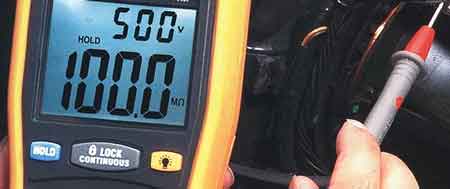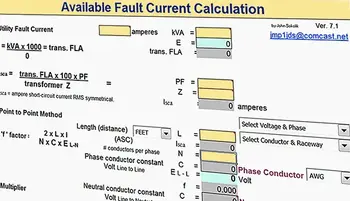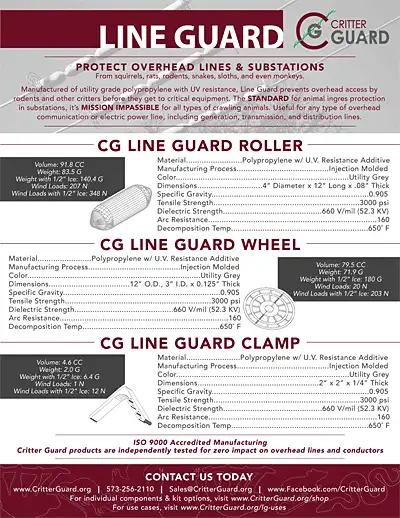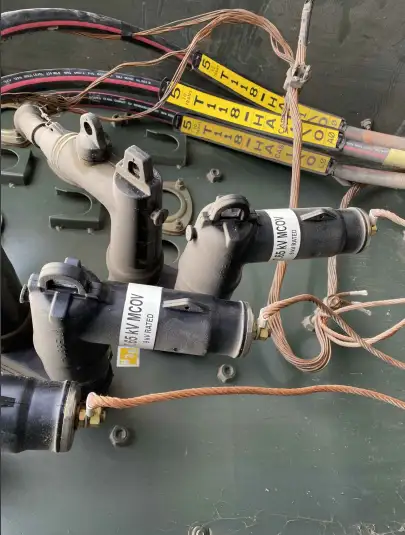What is a Megohmmeter? A Great Testing Tool

CSA Z463 Electrical Maintenance -
Our customized live online or in‑person group training can be delivered to your staff at your location.

- Live Online
- 6 hours Instructor-led
- Group Training Available
Download Our NFPA 70E Fact Sheet – 2024 Electrical Safety Edition

- Understand how NFPA 70E works with NEC and NFPA 70B standards
- Clarify the shared responsibility between employers and employees
- Learn how NFPA 70E supports OSHA compliance
What is a megohmmeter? An insulation resistance tester that applies high DC voltage to measure gigaohms, detect leakage current and dielectric integrity in cables, motors, transformers, and switchgear for safety, commissioning, and preventive maintenance.
What Is a Megohmmeter?
What is a megohmmeter, and why should every electrical professional understand its importance? This specialized tool, also known as an insulation resistance tester, is critical for ensuring the safety and reliability of electrical systems in industrial, commercial, and institutional settings. By measuring high resistance values in electrical insulation, it helps detect potential faults, prevent equipment failures, and minimize costly downtime. In this article, we'll explore the key concepts and applications, including insulation integrity, fault detection, safety practices, testing procedures, and the role of megohmmeters in preventive maintenance programs. By understanding these crucial aspects, electrical professionals can enhance their skills in troubleshooting, maintenance, and safety protocols related to electrical systems. For a broader overview of specifications and use cases, the insulation resistance tester is well documented with practical guidance for field work.
To perform an insulation resistance test, the megohmmeter is connected to the conductor under test and a known reference point, typically ground. The device then applies DC voltages, typically within a specific voltage range, to the conductor and measures the resulting current flow. This resistance measurement, displayed in megohms, provides valuable information about the insulation's condition. A high resistance reading indicates that the insulation is in good condition and effectively preventing current leakage. To initiate the test, the operator simply presses the test button, and the megohmmeter applies the selected DC voltage. It's important to choose the appropriate voltage range based on the type of equipment and system voltage being tested. Detailed step-by-step methods are outlined in this electrical insulation resistance test reference that aligns with industry practice.
FREE EF Electrical Training Catalog
Download our FREE Electrical Training Catalog and explore a full range of expert-led electrical training courses.

- Live online and in-person courses available
- Real-time instruction with Q&A from industry experts
- Flexible scheduling for your convenience
Insulation Integrity
The primary function of a megohmmeter is to assess the integrity of electrical insulation. Insulation acts as a barrier between conductors, preventing current leakage and ensuring the safe operation of electrical equipment. Over time, insulation can degrade due to factors like aging, heat, moisture, or chemical exposure. This degradation can weaken the dielectric strength of the insulation, increasing the risk of electrical breakdown. By measuring the insulation resistance, it provides valuable insights into the condition of the insulation and helps identify potential problems before they escalate. High insulation resistance values generally indicate good insulation quality, while low values suggest potential weaknesses that require further investigation or maintenance. Technicians can follow these checking insulation resistance recommendations to corroborate trends and spot early degradation.
Fault Detection
Megohmmeters are essential tools for detecting various types of insulation faults in electrical systems. One common fault is a ground fault, where a live conductor comes into contact with the ground or a grounded component. This can result in leakage current flowing to the ground, potentially causing electrical shocks or equipment damage. They can detect ground faults by measuring the insulation resistance between the conductor and ground. Another type of fault is a short circuit, where two conductors with different potentials come into contact, leading to a large current flow. While it might not directly detect a short circuit, it can identify insulation weaknesses that could eventually lead to one. By regularly testing insulation resistance, potential faults can be identified and addressed proactively, minimizing downtime and preventing costly repairs. Integrating insulation measurements with broader electrical testing routines helps correlate findings across protection, power quality, and asset health.
Safety Practices
Due to the high voltages involved in insulation resistance tests, safety is paramount when using a megohmmeter. Before conducting any tests, it's crucial to de-energize the electrical equipment and verify isolation to prevent electrical shocks. Additionally, any capacitive charge stored in the equipment should be discharged safely before and after testing. Operators should always use appropriate personal protective equipment, such as insulated gloves and safety glasses, to minimize the risk of electrical hazards. Following the manufacturer's instructions and established safety procedures is critical for ensuring the safe and effective use.
Testing Procedures
Proper testing procedures are essential for obtaining accurate and reliable results. Before conducting a test, it's crucial to select the appropriate testing voltage based on the type of equipment and the system voltage. The equipment under test should be disconnected from other circuits and properly grounded to prevent interference. The megohmmeter leads should be connected to the appropriate terminals, ensuring good contact. During the test, it's important to observe the reading and allow sufficient time for the insulation resistance to stabilize. The measured value should then be compared to the recommended values for the specific equipment and application. Any deviations from the expected values may indicate insulation degradation and require further investigation. Prior to applying high voltage, a digital multimeter can verify isolation and baseline continuity for safer setup.
Preventive Maintenance Programs
Megohmmeters play a vital role in preventive maintenance programs for industrial, commercial, and institutional power systems. Regular insulation resistance tests help identify potential problems before they lead to equipment failures or safety hazards. By incorporating megohmmeter testing into routine maintenance schedules, organizations can proactively address insulation degradation, extend the lifespan of electrical equipment, and minimize costly downtime. The frequency of testing depends on factors such as the type of equipment, its operating environment, and industry standards. However, regular testing, typically at least once a year, is crucial for ensuring the continued reliability and safety of electrical systems. In rotating equipment programs, standardized electric motor testing complements IR readings to track winding and insulation health over time.
Test Your Knowledge About Test Equipment!
Think you know Test Equipment? Take our quick, interactive quiz and test your knowledge in minutes.
- Instantly see your results and score
- Identify strengths and areas for improvement
- Challenge yourself on real-world electrical topics
Questions and Answers:
What is it used for?
It is primarily used to measure the insulation resistance of electrical equipment and systems. This helps assess the condition of the insulation and identify potential weaknesses that could lead to electrical faults or hazards.
What are the different types?
There are various types, including analog, digital, hand-cranked, and battery-powered models. They differ in their features, accuracy, and portability.
What is the difference between a megohmmeter and a multimeter?
While both measure electrical resistance, a megohmmeter is specifically designed to measure very high resistance values (megohms) using a high testing voltage. A multimeter typically measures lower resistance values and has other functions like measuring voltage and current. For basic diagnostics, traditional analog multimeters offer useful indication, though they are unsuited to high-megohm insulation checks.
How do you use one safely?
Safety precautions include de-energizing the equipment, discharging capacitive charge, using appropriate PPE, and following manufacturer instructions.
How do you interpret readings?
Higher resistance values generally indicate better insulation quality. Specific guidelines and acceptance criteria should be consulted for accurate interpretation.
They play a crucial role in maintaining the safety and reliability of industrial, commercial, and institutional power systems. These specialized instruments, also known as insulation resistance testers, are used to measure very high electrical resistance values, typically in the megohm (millions of ohms) range. By applying a high testing voltage, usually DC voltages between 500V and 5kV, a megohmmeter can assess the condition of electrical insulation in various components, such as cables, motors, transformers, and switchgear. This information is vital for detecting potential insulation weaknesses that could lead to electrical faults, equipment damage, or even safety hazards.







